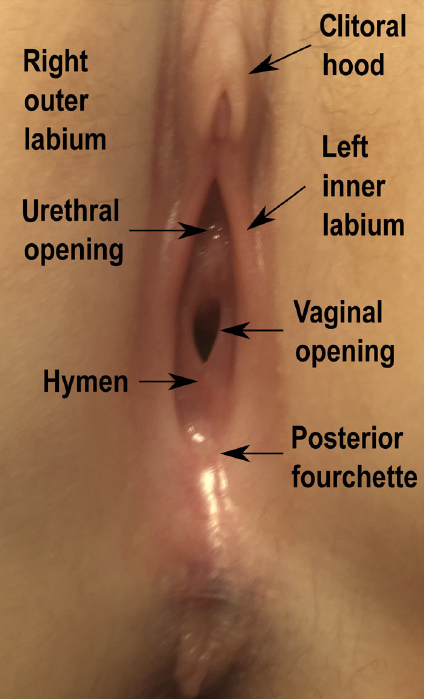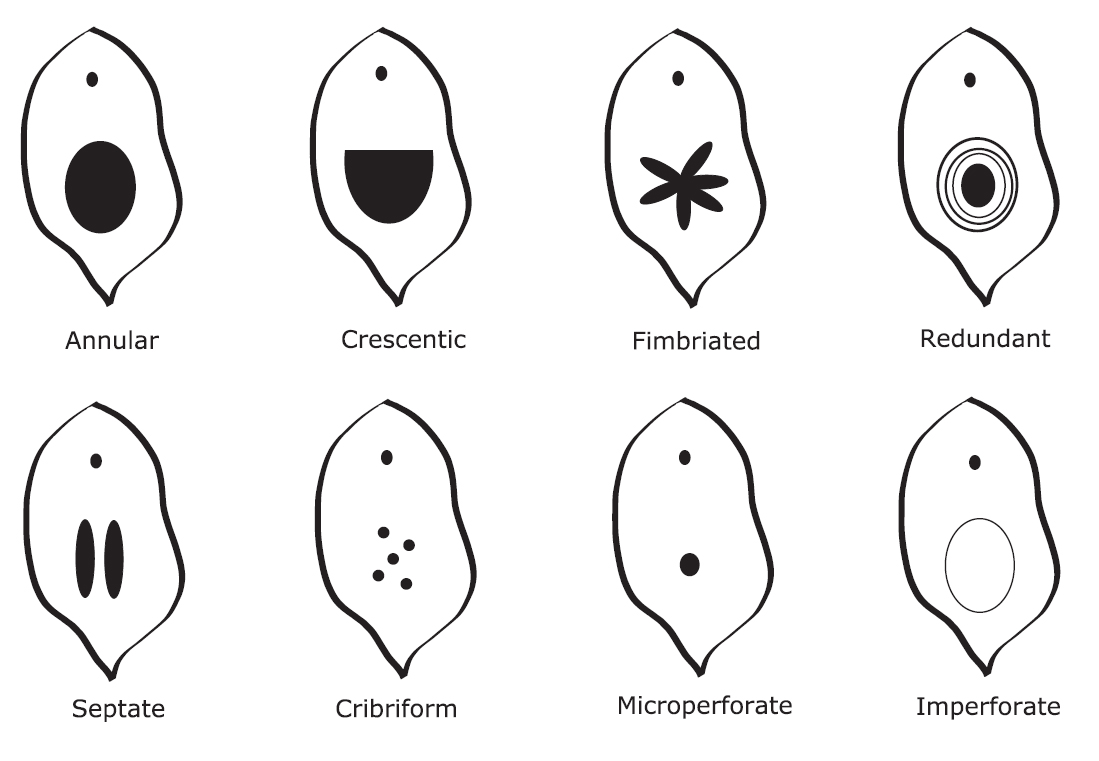
The hymen is a thin, circular piece of tissue located at the entrance of the vagina. It’s a remnant from fetal development and can vary in size, shape, and thickness.
At birth, the hymen typically surrounds the vaginal opening like a ring. In some cases, it might partially or completely cover the opening. Rarely, a hymen can be completely closed, which can cause problems with menstruation.
The hymen is a tissue often overlooked during medical training, and many doctors might not feel comfortable examining it 1. A study showed that only about two-thirds of doctors just finishing their training could correctly identify the hymen in pictures of young girls’ genitals 2.
Despite this, medical organizations recommend that doctors check a girl’s genitals as part of a regular checkup. This can be helpful for both finding any problems and teaching the girl and her family the correct names for their body parts. Using the right words can help children feel more comfortable and be less likely to stay silent if someone touches them inappropriately 3,4,5.
Hymens Come in Many Different Shapes
Many people are under the misconception that they can tell from looking at a hymen if a girl has had sex or been abused. This is incorrect. Even professionals have very often misdiagnosed ‘virginity’ or abuse. In fact, only 7% of cases in a large study could be determined by the appearance of the hymen 6. The frequent inspection of the hymen by parents or caregivers is also recognised as an abuse. General inspection and or curiosity, checks for cleanliness etc. is normal but if you find yourself ritually checking for abuse, please seek advice from a doctor.

Do not use our site and or images here to try and detect abuse. That is not the intention of the project – we are here for you to see that your (or your child’s) genitalia are normal – to let you feel comfortable with genitalia and take them out of the ‘taboo’ topics. The content is not intended to replace regular visits to a health professional or to perform any self-diagnosis.
Here is an image from the Journal of Paediatrics and Child Health in a superb article title – Hymen and virginity: What every paediatrician should know 7 – which shows you 8 different appearances of hymen. The black dot at the top of each image is the Urethra – where urine exits.
A septate, cribriform or microperforate hymen may lead to difficulty with tampon’s insertion or vaginal penetrative sex.
References
- Jarral F. A hymen epiphany. J. Clin. Ethics 2015; 26: 158–60.
- Dubow SR, Giardino AP, Christian CW et al. Do pediatric chief residents recognize details of prepubertal female genital anatomy: A national survey. Child Abuse Negl. 2005; 29: 195–205.
- Jacobs AM, Alderman EM. Gynecologic examination of the prepubertal girl. Pediatr. Rev. 2014; 35: 97–105.
- Braverman PK, Breech L; The Committee on Adolescence. Gynecologic examination for adolescents in the pediatric office setting. Pediatrics 2010; 126: 583–90.
- Khoori E, Gholamfarkhani S, Tatari M et al. Parents as teachers: Mothers’ roles in sexual abuse prevention education in Gorgan, Iran. Child Abuse Negl. 2020; 109: 104695.
- Interpretation of Medical Findings in Suspected Child Sexual Abuse: An Update for 2018 – J.A. Adams et al. / J Pediatr Adolesc Gynecol 31 (2018) 225 – 231
- Hymen and virginity: What every paediatrician should know – Moussaoui, Abdulcadir and Yaron / Journal of Paediatrics and Child Health 58 (2022) 382 – 387
